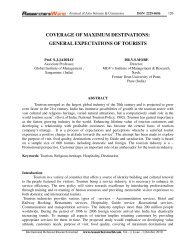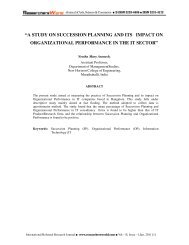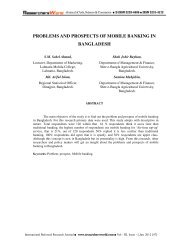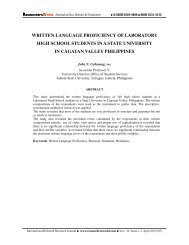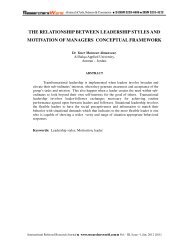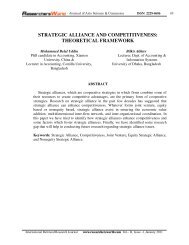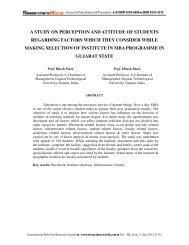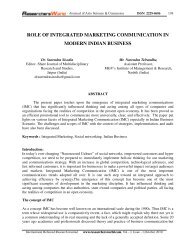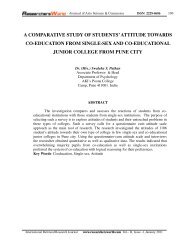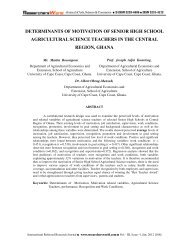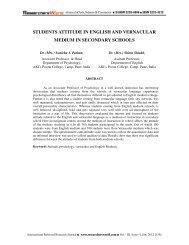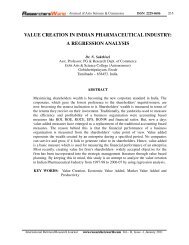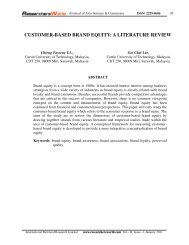settlement patterns and economic development - Researchers World
settlement patterns and economic development - Researchers World
settlement patterns and economic development - Researchers World
You also want an ePaper? Increase the reach of your titles
YUMPU automatically turns print PDFs into web optimized ePapers that Google loves.
Majority of the mixed communities reported that<br />
-Journal of Arts, Science & Commerce ■ E-ISSN 2229-4686 ■ ISSN 2231-4172<br />
Table 3: Household values in indigenous communities<br />
Response<br />
Selfworth<br />
Frequency Percentage<br />
(%)<br />
Frequency Percentage<br />
(%)<br />
5 25 8 47<br />
Frequency Percentage<br />
(%)<br />
Children’s<br />
education<br />
<strong>and</strong> wellbeing<br />
Family<br />
links <strong>and</strong><br />
values<br />
Peaceful<br />
coexistence<br />
Hard<br />
work to<br />
earn a<br />
living<br />
Good<br />
Health<br />
9 45 5 29.4 6 33.3<br />
9 50<br />
6 30 3 16.7<br />
2 11.8<br />
2 11.8<br />
Total<br />
20 100.0 17 100<br />
18 100.0<br />
family links in general was very important to them <strong>and</strong> thus they did all they could to maintain a<br />
relationship with the extended family in their hometowns. This could be attributed to the continual<br />
conflict between the two groups especially over l<strong>and</strong> issues, which made the issue of peaceful<br />
coexistence an important value for the indigene <strong>and</strong> mixed communities. Interestingly, the settler<br />
communities mentioned two other factors that really define their livelihood; hard work <strong>and</strong> good<br />
health. Obviously, hard work is critical but one needs a sound <strong>and</strong> a healthy body to be able to work<br />
hard. It is not surprising therefore that it is only in the settler <strong>and</strong> mixed communities (Asensoho <strong>and</strong><br />
Jukwa-Krobo towns respectively) that have community clinics (See Table 4 for <strong>development</strong> trends).<br />
The important thing to note here is that the <strong>settlement</strong> groups have different value systems, decision<br />
making styles which determine the community pace. The next issue to be discussed then is whether<br />
the culture in terms of their occupations, work ethic <strong>and</strong> value systems of the communities has an<br />
effect on the <strong>development</strong> trend. This is discussed next.<br />
Development trends<br />
Table 4 below summarises the differing <strong>development</strong> experience during the past 10 years. The<br />
indigene communities are more endowed than the settler <strong>and</strong> the mixed communities. For example,<br />
access to electricity <strong>and</strong> a community centre are available only in the indigene communities. Further,<br />
it is only the indigene community (Ntafrewaso) that is tarred <strong>and</strong> two km of road is to be tarred in the<br />
Nyinase (an indigene town). So far, there is no indication of when any of these amenities would be<br />
International Refereed Research Journal ■ www.researchersworld.com ■ Vol.– II, Issue –2,April 2011 209



